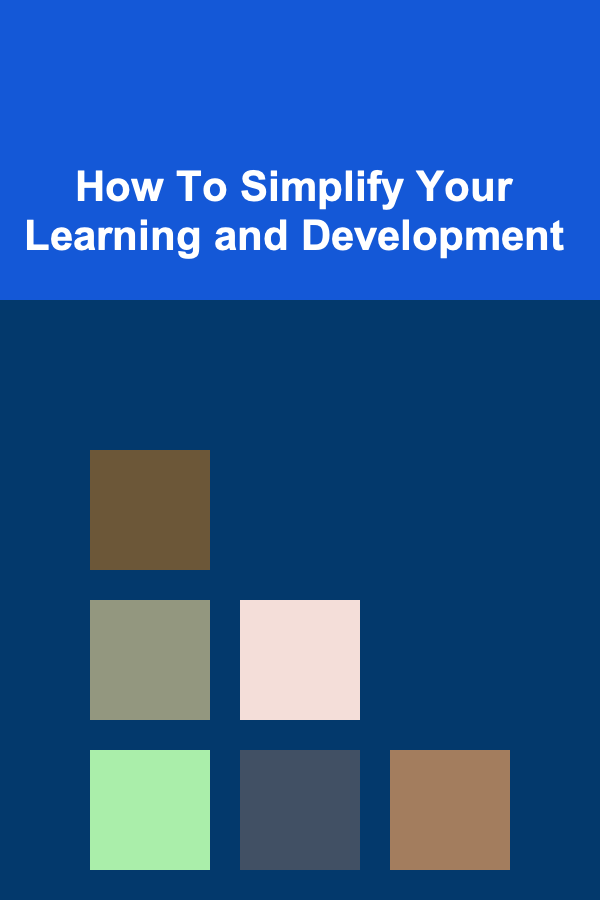
Mastering Robot Vision for Navigation
ebook include PDF & Audio bundle (Micro Guide)
$12.99$6.99
Limited Time Offer! Order within the next:

Robot vision, the ability of a robot to "see" and interpret its surroundings through cameras and sensors, is a cornerstone of autonomous navigation. Without robust vision capabilities, robots are relegated to pre-programmed paths or require constant human supervision. Mastering robot vision for navigation is a multifaceted endeavor, encompassing a deep understanding of image acquisition, processing, feature extraction, localization, mapping, and path planning. This article delves into the intricacies of these areas, providing a comprehensive guide to achieving effective and reliable robot navigation using vision.
I. Foundations of Robot Vision
Before diving into advanced navigation techniques, it's crucial to understand the fundamental building blocks of robot vision.
A. Image Acquisition: The Robot's "Eyes"
The quality and type of camera used significantly impact the performance of any vision-based navigation system. Key considerations include:
- Camera Type:
- Monocular Cameras: Single-lens cameras offer simplicity and affordability. However, they lack inherent depth information, requiring algorithms like Structure from Motion (SfM) or monocular SLAM to estimate depth from sequential images.
- Stereo Cameras: Utilize two cameras separated by a baseline to provide depth information through triangulation. This is generally more robust than monocular depth estimation but requires careful calibration.
- RGB-D Cameras: (e.g., Intel RealSense, Microsoft Kinect) Directly capture depth information using infrared projectors and sensors. They provide dense depth maps but may be sensitive to lighting conditions and material properties.
- Event Cameras: (e.g., Dynamic Vision Sensors) Instead of capturing full frames at a fixed rate, event cameras detect changes in brightness asynchronously. This allows for very high temporal resolution and robustness to high dynamic range scenes, making them suitable for fast-moving robots and challenging lighting conditions.
- Resolution: Higher resolution captures more detail but increases computational load. Choosing the appropriate resolution depends on the application and processing power.
- Frame Rate: Higher frame rates allow for faster reaction times and smoother motion planning, but also increase computational demands and data storage requirements.
- Field of View (FOV): A wider FOV provides a broader view of the environment, but can introduce distortion and reduce resolution for distant objects.
- Lighting Conditions: Consider the typical lighting environment in which the robot will operate. Low-light cameras or external lighting may be necessary for poorly lit areas.
B. Image Processing: Preparing the Data
Raw images acquired from cameras often contain noise and distortions that can hinder subsequent analysis. Image processing techniques aim to clean and enhance the images, preparing them for feature extraction and other downstream tasks.
- Noise Reduction: Filtering techniques, such as Gaussian blur, median filter, and bilateral filter, can reduce noise while preserving important image features. The choice of filter depends on the type of noise present in the image.
- Color Correction and White Balancing: These techniques adjust the color balance of the image to compensate for variations in lighting and camera characteristics.
- Geometric Distortion Correction: Camera lenses introduce distortions that can affect the accuracy of feature extraction and depth estimation. Calibration techniques can be used to estimate the camera's intrinsic parameters and correct for these distortions.
- Image Enhancement: Techniques like histogram equalization and contrast stretching can improve the visibility of details in the image.
- Background Subtraction: Removing static background elements can simplify the image and focus on moving objects, particularly useful in dynamic environments.
C. Feature Extraction: Finding Key Information
Feature extraction involves identifying salient points or regions in the image that can be used for object recognition, localization, and mapping. Good features should be distinctive, robust to changes in viewpoint and lighting, and computationally efficient to extract and match.
- Corner Detection: Corners are points with high curvature in two dimensions, making them easily identifiable and trackable. Popular corner detectors include:
- Harris Corner Detector: A classic corner detector based on the eigenvalues of the structure tensor.
- Shi-Tomasi Corner Detector: A variation of the Harris detector that selects the "best" corners based on a different eigenvalue criterion.
- FAST (Features from Accelerated Segment Test): A very fast corner detector suitable for real-time applications.
- Edge Detection: Edges represent boundaries between objects or regions with different image properties. Common edge detectors include:
- Canny Edge Detector: A sophisticated edge detector that uses multiple stages to filter noise, find gradients, and suppress spurious edges.
- Sobel Operator: A simple gradient-based edge detector.
- Scale-Invariant Feature Transform (SIFT): A robust feature descriptor that is invariant to changes in scale, rotation, and illumination. SIFT is widely used for object recognition and image matching.
- Speeded-Up Robust Features (SURF): A faster alternative to SIFT that uses integral images to speed up feature extraction and matching.
- Oriented FAST and Rotated BRIEF (ORB): A real-time alternative to SIFT and SURF that combines the FAST corner detector with the BRIEF descriptor.
- Deep Learning-Based Feature Extraction: Convolutional Neural Networks (CNNs) can be trained to learn features directly from images. These features can be highly discriminative and robust to variations in the environment. Examples include features extracted from pre-trained models like ResNet or custom-trained models for specific tasks.
II. Localization: Knowing Where You Are
Localization is the process of determining the robot's pose (position and orientation) within its environment. Accurate localization is essential for successful navigation.
A. Visual Odometry (VO)
Visual odometry estimates the robot's pose by analyzing the motion of features between consecutive images. It provides a relative pose estimate, meaning that it tracks the robot's movement relative to its starting point. VO is subject to drift over time, so it is often combined with other localization techniques.
- Feature-Based VO: Extracts and matches features between consecutive images. The motion that explains the observed feature displacements is then estimated using techniques like RANSAC (RANdom SAmple Consensus) to handle outliers.
- Direct VO: Directly uses the image intensities to estimate the robot's motion, without explicitly extracting features. Direct VO can be more accurate than feature-based VO in certain situations but is more sensitive to lighting changes and image noise. Examples include Direct Sparse Odometry (DSO) and Large-Scale Direct Monocular SLAM (LSD-SLAM).
B. Visual SLAM (Simultaneous Localization and Mapping)
Visual SLAM is a more sophisticated approach than VO that simultaneously builds a map of the environment and estimates the robot's pose within that map. By creating a loop-closure mechanism, SLAM can correct for drift in the pose estimate and improve the overall accuracy of localization.
- Feature-Based SLAM: Relies on extracting and matching features to build a map of the environment. Keyframe-based SLAM methods, such as ORB-SLAM, select keyframes (images) to represent the map and optimize the map and pose estimates over time.
- Direct SLAM: Directly uses image intensities to build a map and estimate the robot's pose. These methods often represent the map as a semi-dense or dense point cloud.
- RGB-D SLAM: Leverages the depth information provided by RGB-D cameras to build a 3D map and estimate the robot's pose. RGB-D SLAM algorithms, such as KinectFusion and RTAB-Map, can create accurate and dense 3D maps in real-time.
- Graph-Based SLAM: Represents the SLAM problem as a graph, where nodes represent robot poses and edges represent constraints between poses. Graph optimization techniques are used to find the optimal configuration of the graph that minimizes the error between the constraints.
C. Global Localization: Recovering from Loss of Tracking
Sometimes, the robot can lose track of its position, especially in dynamic or cluttered environments. Global localization techniques aim to re-localize the robot within a known map without relying on previous pose estimates.
- Place Recognition: Identifies previously visited locations based on visual cues. This can be achieved by matching image features or using techniques like bag-of-words.
- Particle Filter Localization (Monte Carlo Localization): Maintains a set of particles, each representing a possible robot pose. The particles are updated based on sensor measurements and motion commands. The robot's pose is estimated as the weighted average of the particles.
- Appearance-Based Localization: Uses global image descriptors to match the current image to a database of images with known locations. This can be robust to changes in viewpoint and lighting.
III. Mapping: Building a Representation of the World
Mapping is the process of creating a representation of the environment that the robot can use for navigation and planning. The choice of map representation depends on the application and the available sensors.
A. Occupancy Grid Maps
Occupancy grid maps divide the environment into a grid of cells, where each cell represents the probability of being occupied by an obstacle. These maps are easy to create and update and are widely used for navigation in 2D environments.
- Static Occupancy Grid Maps: Represent the static obstacles in the environment.
- Dynamic Occupancy Grid Maps: Track moving obstacles and update the occupancy probabilities over time.
- 3D Occupancy Grid Maps: Extend the concept of occupancy grids to three dimensions, allowing for the representation of 3D environments.
B. Feature Maps
Feature maps represent the environment as a collection of landmarks or features, such as corners, edges, or objects. These maps are more compact than occupancy grid maps and can be used for both localization and navigation.
- Sparse Feature Maps: Represent the environment with a small number of carefully selected features.
- Dense Feature Maps: Represent the environment with a large number of features.
C. Semantic Maps
Semantic maps go beyond geometric representations of the environment and include semantic information, such as object labels and room types. These maps enable robots to perform more complex tasks, such as following instructions and interacting with objects in the environment.
- Object Recognition and Segmentation: Identifying and labeling objects in the environment. This can be achieved using deep learning-based object detectors and semantic segmentation algorithms.
- Scene Understanding: Interpreting the relationships between objects and the environment to understand the context of the scene.
D. 3D Reconstruction and Point Clouds
Creating a 3D model of the environment using techniques like stereo vision, RGB-D sensors, or laser scanners. Point clouds are a common representation of 3D environments, consisting of a set of 3D points.
- Mesh Reconstruction: Creating a surface mesh from a point cloud, which can be used for visualization and collision avoidance.
- Volumetric Mapping: Representing the environment as a 3D volume, allowing for the integration of sensor data from multiple viewpoints. Truncated Signed Distance Function (TSDF) is a popular volumetric mapping technique.
IV. Path Planning: Finding the Optimal Route
Path planning involves finding a collision-free path from a starting point to a goal point, while optimizing for criteria such as distance, time, or energy consumption. Path planning algorithms rely on a map of the environment to find feasible paths.
A. Classical Path Planning Algorithms
These algorithms are typically used in static environments with known obstacles.
- A Search:* A widely used path planning algorithm that combines the cost of the path so far with a heuristic estimate of the distance to the goal. A* is guaranteed to find the optimal path if the heuristic is admissible (i.e., never overestimates the distance to the goal).
- Dijkstra's Algorithm: Finds the shortest path from a starting point to all other points in the graph. Dijkstra's algorithm is a special case of A* where the heuristic is zero.
- Rapidly-exploring Random Trees (RRT): A sampling-based path planning algorithm that rapidly explores the search space by randomly sampling points and connecting them to the nearest node in the tree. RRT is particularly well-suited for high-dimensional spaces and environments with complex obstacles.
- Probabilistic Roadmaps (PRM): A sampling-based path planning algorithm that builds a roadmap of the environment by randomly sampling points and connecting them to each other. The roadmap can then be used to find paths between any two points in the environment.
B. Reactive Path Planning Algorithms
These algorithms are designed to handle dynamic environments with moving obstacles. They typically use sensor data to detect obstacles and adjust the robot's path in real-time.
- Dynamic Window Approach (DWA): A reactive path planning algorithm that samples a set of possible robot velocities and simulates the robot's motion for a short time horizon. The velocity that results in the best trajectory (i.e., closest to the goal and farthest from obstacles) is then selected.
- Velocity Obstacles: A reactive path planning algorithm that considers the velocities of other agents in the environment when planning the robot's path. Velocity obstacles are regions in the velocity space that would result in a collision with another agent.
- Bug Algorithms: Simple reactive path planning algorithms that follow the boundary of obstacles until they can move directly towards the goal.
C. Learning-Based Path Planning
Machine learning techniques can be used to learn path planning strategies from data. This can be particularly useful in complex or unstructured environments where classical algorithms may struggle.
- Reinforcement Learning: Training an agent to learn an optimal path planning policy through trial and error. The agent receives a reward for reaching the goal and a penalty for colliding with obstacles.
- Imitation Learning: Learning a path planning policy from expert demonstrations. The agent learns to mimic the behavior of an expert planner.
- Deep Learning for Path Planning: Using deep neural networks to predict paths directly from sensor data.
V. Robustness and Error Handling
Real-world environments are often unpredictable, and robot vision systems must be robust to noise, lighting changes, and other disturbances. Effective error handling is crucial for ensuring reliable navigation.
A. Sensor Fusion
Combining data from multiple sensors (e.g., cameras, LiDAR, IMUs) to improve the accuracy and robustness of localization and mapping. Sensor fusion techniques, such as Kalman filtering and extended Kalman filtering, can be used to estimate the robot's state by combining noisy sensor measurements with a dynamic model of the robot's motion.
B. Outlier Rejection
Identifying and removing spurious sensor measurements or feature matches that can degrade the performance of localization and mapping algorithms. RANSAC is a widely used technique for outlier rejection.
C. Loop Closure Detection and Correction
Detecting when the robot has returned to a previously visited location and correcting for drift in the pose estimate. Loop closure detection can be achieved using techniques like bag-of-words or appearance-based methods. Once a loop closure is detected, the map and pose estimates can be optimized to minimize the error between the observed and predicted measurements.
D. Failure Detection and Recovery
Detecting when the robot vision system has failed (e.g., due to sensor malfunction or loss of tracking) and initiating a recovery procedure. Recovery procedures may involve switching to a different localization technique, re-initializing the SLAM system, or requesting human assistance.
VI. Conclusion
Mastering robot vision for navigation is a challenging but rewarding endeavor. By understanding the fundamental principles of image acquisition, processing, feature extraction, localization, mapping, and path planning, developers can create robots that can navigate autonomously in a wide range of environments. As robot vision technology continues to evolve, we can expect to see even more sophisticated and capable robots in the years to come. Continued research and development in areas like deep learning, sensor fusion, and robust error handling will be crucial for advancing the field of robot vision and enabling truly autonomous robots.

How To Discuss a Film's Use of Symbolism in Character Design
Read More
The IT Manager's Guide: Mastering Technology Management and Strategic IT Solutions
Read More
What Tips Can Help You Reduce Clutter in Your Living Room?
Read More
How To Simplify Your Learning and Development
Read More
How to Make Festive Holiday Coffee Drinks
Read More
How to Maintain Your Rollerblades for Peak Performance
Read MoreOther Products

How To Discuss a Film's Use of Symbolism in Character Design
Read More
The IT Manager's Guide: Mastering Technology Management and Strategic IT Solutions
Read More
What Tips Can Help You Reduce Clutter in Your Living Room?
Read More
How To Simplify Your Learning and Development
Read More
How to Make Festive Holiday Coffee Drinks
Read More